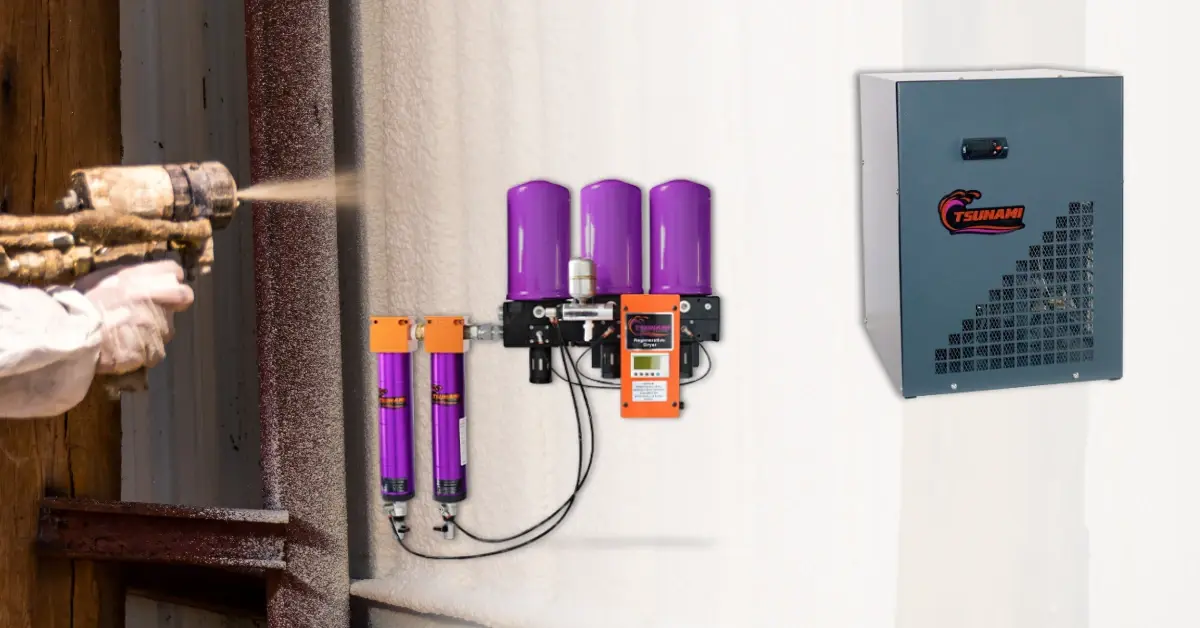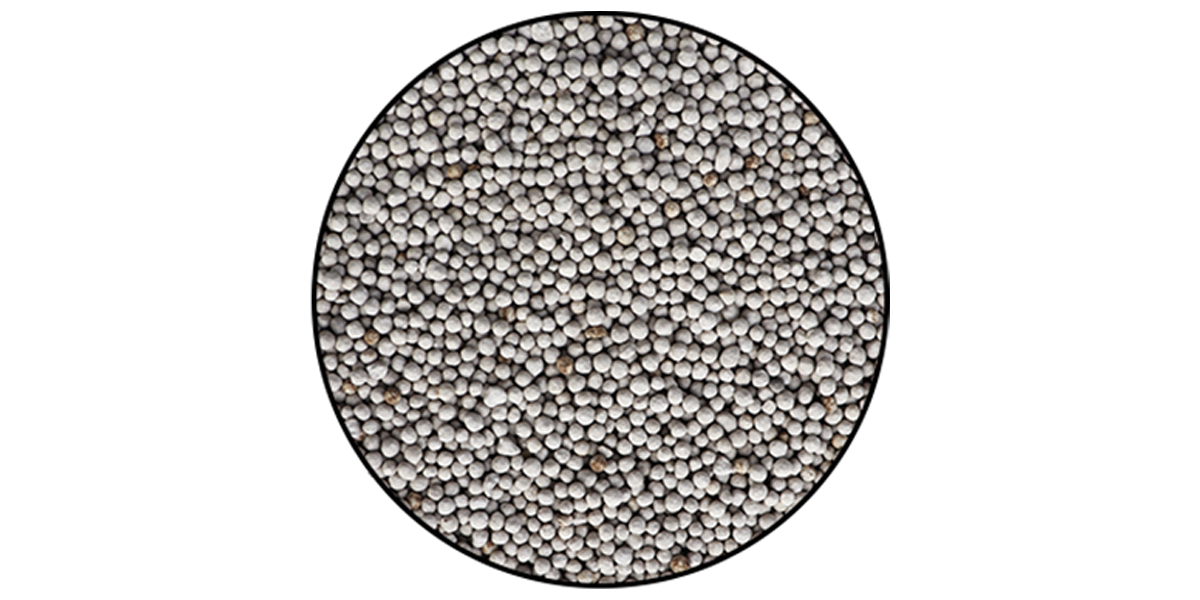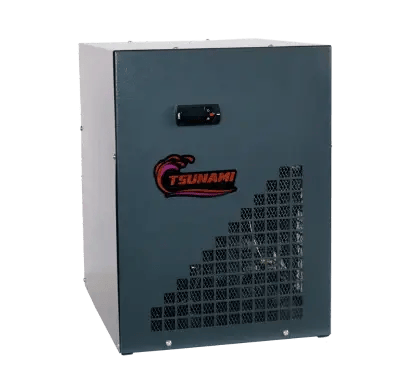5 min read
Desiccant vs. Refrigerated Air Dryers for Spray Foam: Comparison Guide
Tsunami Team
:
Aug 4, 2025 10:20:38 AM

When choosing between desiccant and refrigerated air dryers for spray foam applications, it's important to understand how each type influences air quality and moisture control, as well as how each can significantly affect the overall cost and system performance.
In this article, we will explain each type of dryer, compare the features of each, and cover which is best for spray foam applications.
- What is a desiccant air dryer?
- What is a refrigerated air dryer
- Comparing refrigerated vs desiccant product features and capabilities
- Refrigerated vs desiccant air dryers: comparing the pros and cons
- Refrigerated vs desiccant: which is best for spray foam applications?
- Choosing the right air dryer for your spray foam application
What is a Desiccant Air Dryer?
Desiccant air dryers are industrial pieces of equipment that remove moisture from an air stream with the use of desiccant material. As air travels through the desiccant media, moisture is adsorbed by the desiccant, allowing the dry air to flow downstream. There are many elements, like water vapor and oils, floating in the air that we cannot see. The desiccant air dryer is the best line of defense against these particles.
Most likely, you have already seen desiccant in action when you buy new shoes or electronics. It’s the small bag filled with desiccant beads that says DO NOT EAT.

What is a Refrigerated Air Dryer?
Refrigerated air dryers work like air conditioners. The air is cooled down by passing through a heat exchanger. Moisture condenses and is removed from the air through a drain valve. This air is then reheated and returned to the temperature that it originally started at. These dryers ensure the air remains dry and free from moisture, which is critical during industrial applications to avoid any damage from water to the equipment or the materials being applied.
Comparing Refrigerated vs Desiccant Product Features and Capabilities
Tsunami Refrigerated and desiccant air dryers differ in performance and suitability due each dryer’s key characteristics. Because refrigerated and desiccant air dryers serve different purposes, their key features are unique to each type.
Below is a breakdown comparing the key features of these two types of Tsunami air dryers. Keep in mind, both refrigerated and desiccant dryers may have different flow rates, drains, power requirements, and controllers depending on the manufacturer. To find the specifics on the dryer you’re considering, contact the manufacturer or view the product specifications in its manual or online.
| Desiccant | Refrigerated | |
| Flow Rate | 5-400 CFM | 15-300 CFM |
| Max °F/PSI | 150°F/175-200 PSI | 130°F/232 PSI |
| Humidity Removal Rate | Very High | Moderate |
| Dew Point | -40°F to -80°F | 35°F to 50°F |
| Dryer Controller | Solenoid Timer Valve, Pneumatic Controller | CAREL Control Panel |
| Drains | Float, Electric or Pneumatic | Integrated Automatic Drain |
| Power Required | 120v/220v | 115-230 VAC |
Refrigerated vs Desiccant Air Dryers: Comparing the Pros and Cons
While both desiccant and refrigerated dryers are designed to remove moisture from compressed air, they operate using very different methods. Understanding how each type functions and where they excel can help you choose the best solution for your specific application.
| Key Features | |
Desiccant
|
|
Refrigerated
|
|
What are the Key Features of a Desiccant Air Dryer?
Desiccant air dryers come with several key features. Below is a closer look at the benefits they offer in greater detail:
- Lower dew points: Desiccant dryers typically achieve much lower dew points than other dryers, which means less moisture. These dew points range from -40°F to -80°F.
- Low maintenance costs: Desiccant dryers are easy to maintain, leading to lower overall maintenance costs – under $100 per year on average for Tsunami desiccant dryers, specifically.
- Compact, dual-tower design: Typically, desiccant dryers used in the spray foam industry are made with two towers filled with desiccant beads. One tower dries the air, while the other regenerates, allowing for a constant supply of dry air with no disruptions.
- Wall Mountable: The smaller size of desiccant dryers allows them to be wall-mounted, maximizing space.
- Ideal for sensitive applications: Desiccant dryers offer more precision, making them ideal for sensitive applications like spray foam or powder coating.
- No cooling required: Desiccant air dryers don’t rely on a refrigeration cycle, making them ideal for remote or hot locations. Plus, these dryers are easier to maintain in mobile rigs where the temperature tends to fluctuate.
- 5-8% Purge Air: This refers to the small percentage of compressed air used to regenerate the desiccant material. The low purge air rate is crucial in this process because it ensures efficient drying while minimizing energy consumption and operating costs.

What are the Key Features of a Refrigerated Air Dryer?
Refrigerated air dryers provide several notable features. Here's a more detailed look:
- Cost-effective: Refrigerated dryers are often more cost-effective for general-purpose use where ultra-dry air isn’t critical. There is a lower upfront investment and low operating costs.
- Compact, easy-to-install design: Refrigerated dryers are also space-efficient and easy to install.
- Shelf-mountable: The smaller units can be mounted on a shelf to keep floor space open.
- Minimal maintenance: Less maintenance is required with refrigerated air dryers because there is no desiccant material to replace. Fewer components mean less parts, decreasing complexity.
- Small footprint: The refrigerator dryer’s compact design is ideal for shops with limited space.
- PSI less than 1: This mean that when compressed air passes through the dryer, it loses less than 1 PSI, making it efficient and not likely to disrupt a spray foamer's work by causing a pressure drop at the gun.
Refrigerated vs Desiccant: Which is Best for Spray Foam Applications?
Dry air is critical in spray foam applications for consistent foam quality, equipment protection, and high-quality results. Any air contamination can compromise the outcomes.
Desiccant and refrigerated dryers are both well-suited for spray foam applications. Desiccant dryers deliver extremely dry air, which can be beneficial in environments where moisture control is critical. Refrigerated dryers, while not as aggressive in moisture removal, are still highly effective and often provide a more cost-efficient solution for many spray foam setups.
In short, both options will help ensure the compressed air is dry, an essential factor in preventing moisture-related issues that can compromise foam quality, cause defects, or clog spray guns. When deciding between the two, consider your specific application needs, climate, and budget, including both upfront and long-term operating costs.

What Questions Should I Ask Before Choosing Between Desiccant or Refrigerated Dryers?
As you move along in the decision-making process, consider the following questions to help identify which air dryer will best suit your needs. Some helpful questions to ask yourself include:
- How dry do I need my air to be?
- What are the dew point requirements for my application?
- How cold are my facility’s temperatures? Do the temperatures fluctuate often?
- Do I need an air dryer that runs continuously? Or one that can turn up and down on demand?
- How much precision do I need in your application?
- What CFM or Cubic Feet per minute do I need? (This quantifies the volume of air circulated per minute.)
If you don’t have the answers to some of the more critical questions, like product requirements, contact the manufacturer – they can provide the information for you.
Choosing the Right Air Dryer for Your Spray Foam Application
Refrigerated and desiccant dryers have unique features that make them an ideal choice for spray foam, or other environments relying on dry, clean, compressed air. The dryer you choose will not only depend on the environment itself, but your budget, the necessary quantity of compressed air, and more. Discuss your application with a manufacturer to guide your decision between these two types of dryers.
Tsunami offers a range of air dryer models to suit various applications. View our wide range of dryers for a detailed comparison of the available air dryer models and their specifications.

